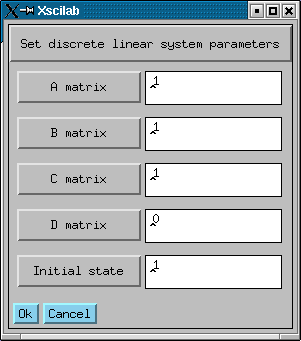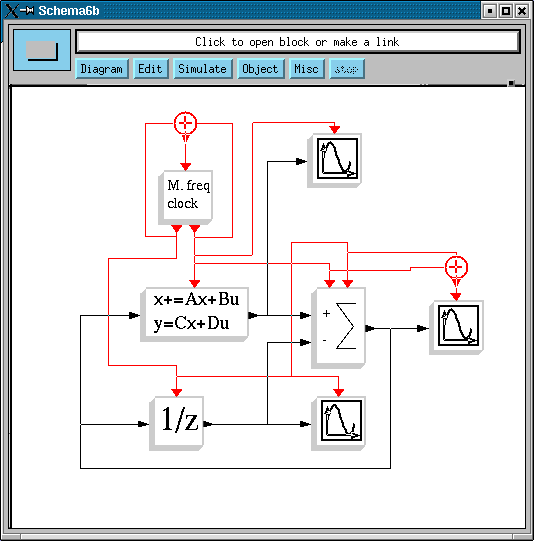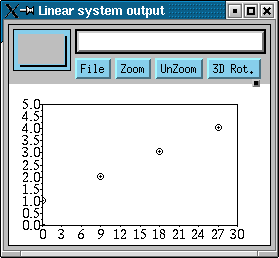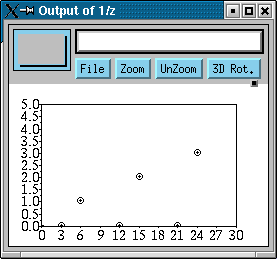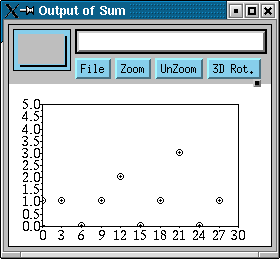
There are four blocks here:

- random generator: at each activation, a new random number is placed on its sole regular output
- 1/z: just a memory, at activation, the internal state is copied to the regular output and then the input is copied into state
- MScope: Scilab graphics window emulating a multidisplay scope
- Delay: when activated, this blocks programs an activation output for some later time (here 3). An activation event is originally programmed at time 0 on its activation output port.
Simulation result









